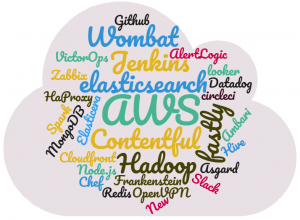In the spirit of these new short-form blog posts (see TekBytes: A Blogging Experiment) it’s probably appropriate that I write a quick post on a new short-form podcasting project I am working on; CloudSpotting!
My day job is as a Solutions Architect at Rackspace, where I’m fortunate enough to work for one of the most tech-agnostic global service providers around! A typical week could include me talking about or designing solutions based on VMware, Hyper-V, AWS, Azure, GCP, OpenStack, or even just plain old dedicated servers! Add to that a swathe of security, networking and storage “stuff”, it all adds up to a pretty healthy mix.
CloudSpotting Time!
Myself and my colleague Sai Iyer thought it would be fun to share some of our learnings and experiences in designing and operating customer solutions. What better way (we thought!), than an easy-to-consume 30 minute monthly podcast for architects and engineers… In the first episode, we discuss scaling applications for peak periods and the insane growth of Kubernetes adoption! We already have episodes planned on phishing, cyber kill-chains, encryption, automation & DevOps along with a host of other topics, so watch this space!
Just to be clear though – No Kool aid, just cool tech! 🙂
For those of you who are also regular Open TechCast listeners, this doesn’t mean I am changing lanes in any way, there will just be more of my dulcet tones available on your favourite podcatcher (which may or may not be a good thing!).
Where can I find it?
If you want to catch the first episode, just search for “CloudSpotting” on iTunes or Stitcher, or catch the show on Soundcloud here:
CloudSpotting – Season 1 Ep 1 – Peaking Early – A discussion on Application Scaling
We have also settled on the Twitter hashtag #spottingclouds, as the reverse has lots of great photos, but not so much tech! 🙂






 Thoughts? Feedback? Make yourself heard using the comments below!
Thoughts? Feedback? Make yourself heard using the comments below! RSS – Posts
RSS – Posts